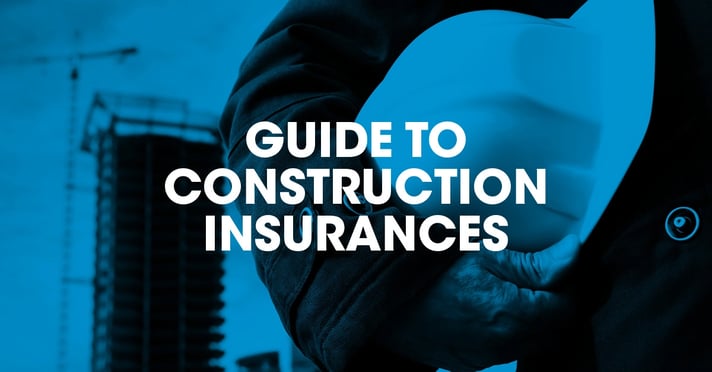The Comprehensive Guide to Claiming Business Insurance in the UK
Navigating the process of claiming business insurance in the UK can seem daunting, especially in times of distress when you need to activate your policy. However, understanding the steps involved can make this process considerably smoother, ensuring that you can recover and get back to business as usual with minimal disruption. Here is a detailed guide on how business owners can claim their business insurance amount from insurance companies in the UK.

Step 1: Review Your Policy
First and foremost, thoroughly review your insurance policy. Understanding the nuances of your coverage is crucial before initiating a claim. Confirm what incidents are covered under your policy, the extent of your coverage, any deductibles that may apply, and the procedure for filing a claim. If any aspect of your policy is unclear, contact your insurance provider or broker for clarification.
Step 2: Report the Incident
In the event of an incident such as theft, vandalism, or damage due to natural disasters, your immediate step should be to report it to the authorities (if applicable) and then to your insurance company. Timeliness is key; most insurance policies require that you inform them of an incident promptly. Delay in reporting can sometimes lead to a denial of the claim.
Step 3: Documentation is Key
Gather all necessary documentation to support your claim. This can include:
- Police reports (for theft, vandalism, etc.)
- Photographs of the damage or theft
- Inventory lists detailing lost or damaged items
- Receipts or quotes for repair or replacement costs
- Business records proving the financial impact on your operation
The more evidence you can provide, the smoother the claims process will be.
Step 4: Fill Out Claim Forms
Your insurance company will provide you with claim forms to fill out. Complete these with as much detail and accuracy as possible. Be honest and thorough in your answers; any discrepancies can delay or even jeopardize your claim.
Step 5: Liaise with the Insurance Adjuster

Once your claim is filed, the insurance company will assign an adjuster to your case. This person evaluates the legitimacy of your claim and the extent of the insurance company's liability. Be prepared to provide the adjuster with access to your business premises, documents, and any additional information they might need to assess the claim. Collaboration with the adjuster is essential for a favorable outcome.
Step 6: Obtain Repair or Replacement Quotes
For damages to property or equipment, obtain quotes from contractors or suppliers for the repair or replacement costs. Your insurance company will need these estimates to determine the compensation amount. In some cases, they may have preferred suppliers or contractors they work with directly.
Step 7: Keep Communication Open
Throughout the process, maintain open lines of communication with your insurance provider. Respond promptly to requests for additional information, and don’t hesitate to follow up on the status of your claim if you haven’t received updates.
Step 8: Settlement of Claim
Upon approval of your claim, your insurance company will offer a settlement. This can be in the form of payment for repairs, replacement, or a cash settlement. Review the settlement offer carefully to ensure it meets the terms of your policy and adequately covers your losses. If you disagree with the offer, it’s within your rights to negotiate or seek mediation.
Additional Tips:
- Prevention is better than cure: Implement risk management practices to reduce the likelihood of needing to claim.
- Understand excess: Know the amount of any excess you will have to pay in the event of a claim, as this can affect your financial planning.
- Legal advice: Consider consulting a legal professional if you encounter disputes or complications during the claims process.
Conclusion
Filing a business insurance claim can be a complex process, but understanding your rights and responsibilities, as well as being prepared with proper documentation, can aid significantly. Remember, insurance is there to protect you and your business, so don’t hesitate to utilize it when necessary. Following the steps outlined above will help ensure that your claim process is as efficient and painless as possible, allowing you to focus on what matters most - running your business. So, always be prepared and well-informed about your insurance policy to make the claiming process as smooth as possible. Always prioritize risk management practices to protect your business in the long run. And most importantly, don't hesitate to reach out for assistance from professionals or legal advisors if needed. With a thorough understanding of the claiming process, you can have peace of mind knowing that your business is well protected. Remember, insurance should never be viewed as an unnecessary expense, but rather an essential investment in the security and stability of your business. Don't wait for a disaster to strike before reviewing and understanding your policy - take action now and ensure that you are fully prepared for any potential incidents in the future. So, review your policy today, implement risk management practices, and have open communication with your insurance provider to safeguard your business from potential risks. Stay informed, stay protected, and keep your business moving forward! Happy claiming!

Disclaimer: This guide is for informational purposes only and should not be considered legal or financial advice. Please consult with a professional advisor for specific guidance on your individual insurance policy and claims process. The author and publisher of this guide disclaim any liability for actions taken or not taken based on the content contained herein. Always review your insurance policy carefully and consult with a professional before making any decisions related to business insurance.
References
Appendix
Common Types of Business Insurance Claims
- Property Damage: This type of claim covers damage to your business property, such as buildings, equipment, or inventory.
- Liability Claims: These claims protect you from legal liability due to bodily injury or property damage caused by your business operations.
- Business Interruption: This type of claim covers income lost due to a temporary shutdown of your business after a disaster.
- Workers' Compensation: If an employee is injured or becomes ill while on the job, this type of claim covers their medical expenses and lost wages.
- Professional Liability: Also known as errors and omissions insurance, this type of claim protects against claims of negligence or inadequate work.
- Cyber Liability: This type of claim protects your business from losses related to cyber attacks, such as data breaches or computer viruses.
- Product Liability: If a product you sold causes harm to a customer, this type of claim covers legal fees and compensation.
- Employee Theft: This type of claim provides coverage for losses due to employee theft or fraud.
- Business Vehicle Accidents: If your business owns vehicles or employees drive their personal vehicles for work purposes, this type of claim protects against accidents and

0 comments:
Post a Comment